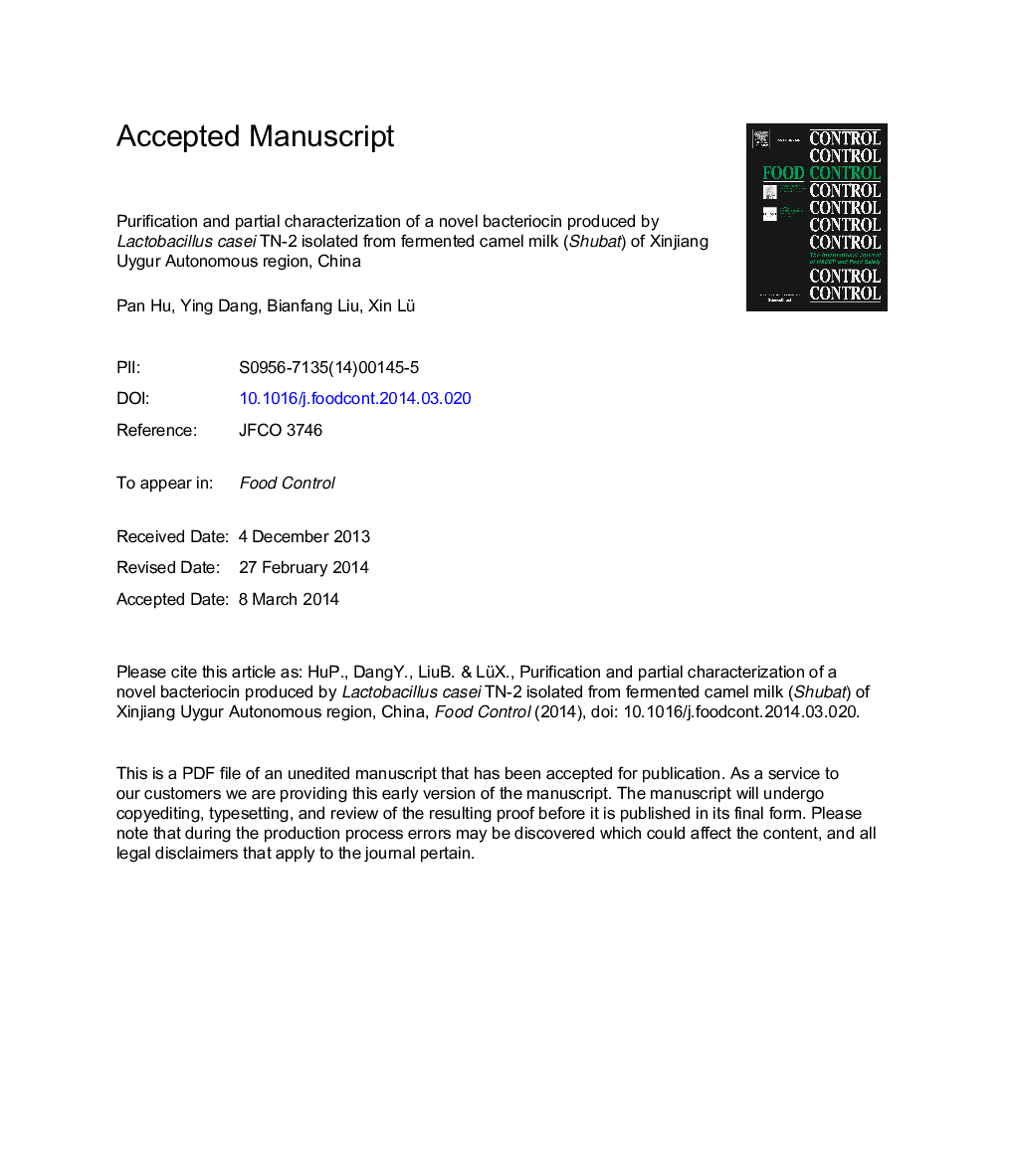| کد مقاله | کد نشریه | سال انتشار | مقاله انگلیسی | نسخه تمام متن |
|---|---|---|---|---|
| 6391821 | 1628419 | 2014 | 36 صفحه PDF | دانلود رایگان |
عنوان انگلیسی مقاله ISI
Purification and partial characterization of a novel bacteriocin produced by Lactobacillus casei TN-2 isolated from fermented camel milk (Shubat) of Xinjiang Uygur Autonomous region, China
دانلود مقاله + سفارش ترجمه
دانلود مقاله ISI انگلیسی
رایگان برای ایرانیان
کلمات کلیدی
موضوعات مرتبط
علوم زیستی و بیوفناوری
علوم کشاورزی و بیولوژیک
دانش تغذیه
پیش نمایش صفحه اول مقاله

چکیده انگلیسی
Identification, characterization and assessment of novel bacteriocins for their potential use as biopreservatives continue to be highlighted in LAB research from past to present. A bacteriocin-producing Lactobacillus casei TN-2 strain was isolated from fermented camel milk (Shubat) of Xinjiang Uygur Autonomous region, China, after which the bacteriocin (designated as caseicin TN-2) was purified by performing ammonium sulfate precipitation, gel filtration, anion exchange chromatography and reversed-phase HPLC separation. According to MS spectrum, the molecular mass of caseicin TN-2 was 6352 Da, which was significantly different from previous reported bacteriocins produced by L. casei strains. Antibacterial activity of caseicin TN-2 was retained over a wide pH range and survived a heat treatment of 121 °C for 20 min. It was sensitive to proteases, such as trypsin and papain. Caseicin TN-2 exhibited a broad antimicrobial spectrum against Gram-positive and Gram-negative food-borne pathogenic strains including some antibiotic-resistant strains. It was found that the minimum inhibitory concentration of caseicin TN-2 to Escherichia coli ATCC25922 and Staphylococcus aureus ATCC25923 was 2.5 mg/mL and 5 mg/mL respectively. Scanning electron microscopy (SEM) and transmission electron microscopy (TEM) analyses were carried out to investigate the effect of caseicin TN-2 on the target cells, where it was demonstrated that the bacteriocidal mode of action was pore formation in the cytoplasmic membrane.
ناشر
Database: Elsevier - ScienceDirect (ساینس دایرکت)
Journal: Food Control - Volume 43, September 2014, Pages 276-283
Journal: Food Control - Volume 43, September 2014, Pages 276-283
نویسندگان
Xin Lü, Pan Hu, Ying Dang, Bianfang Liu,